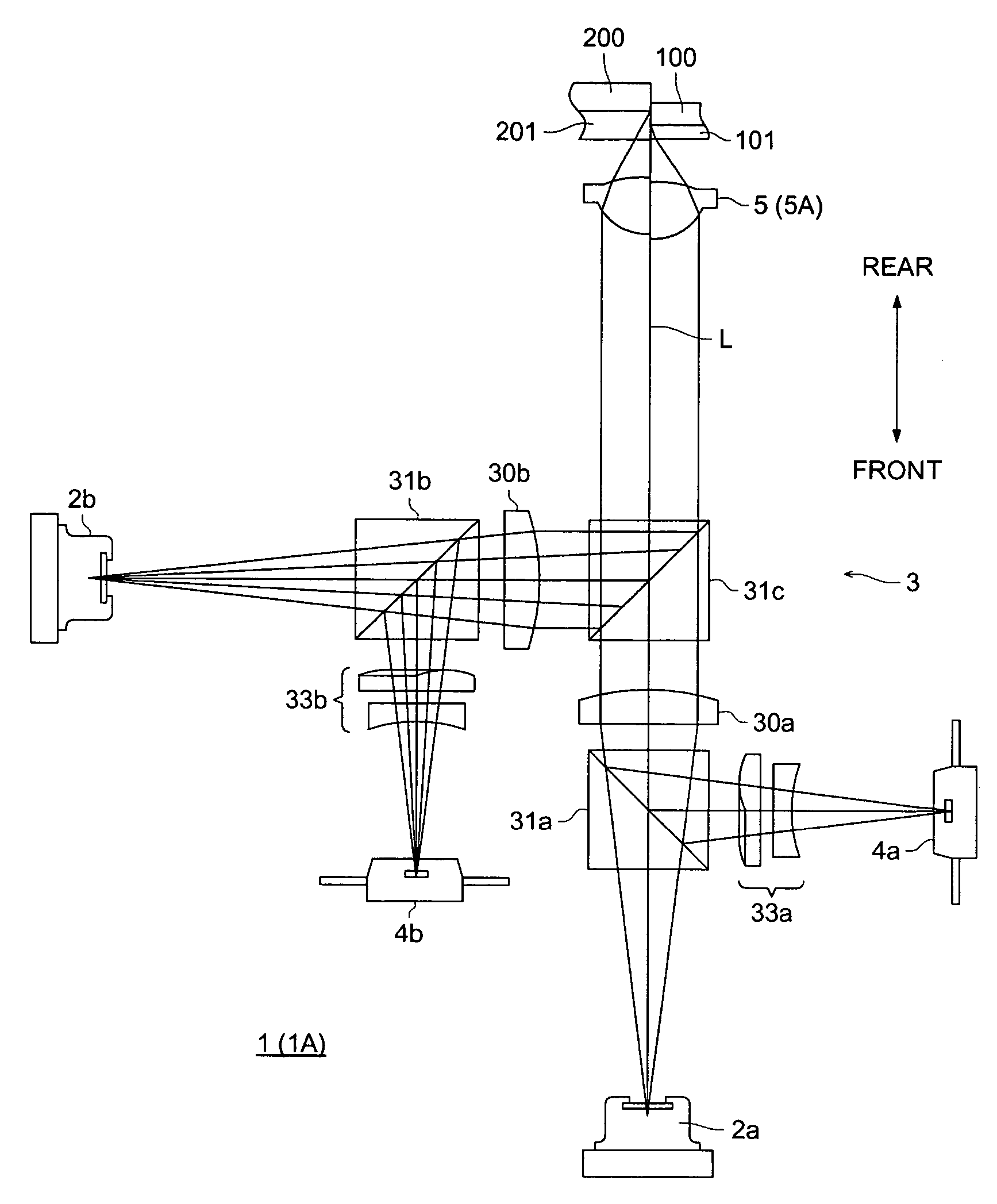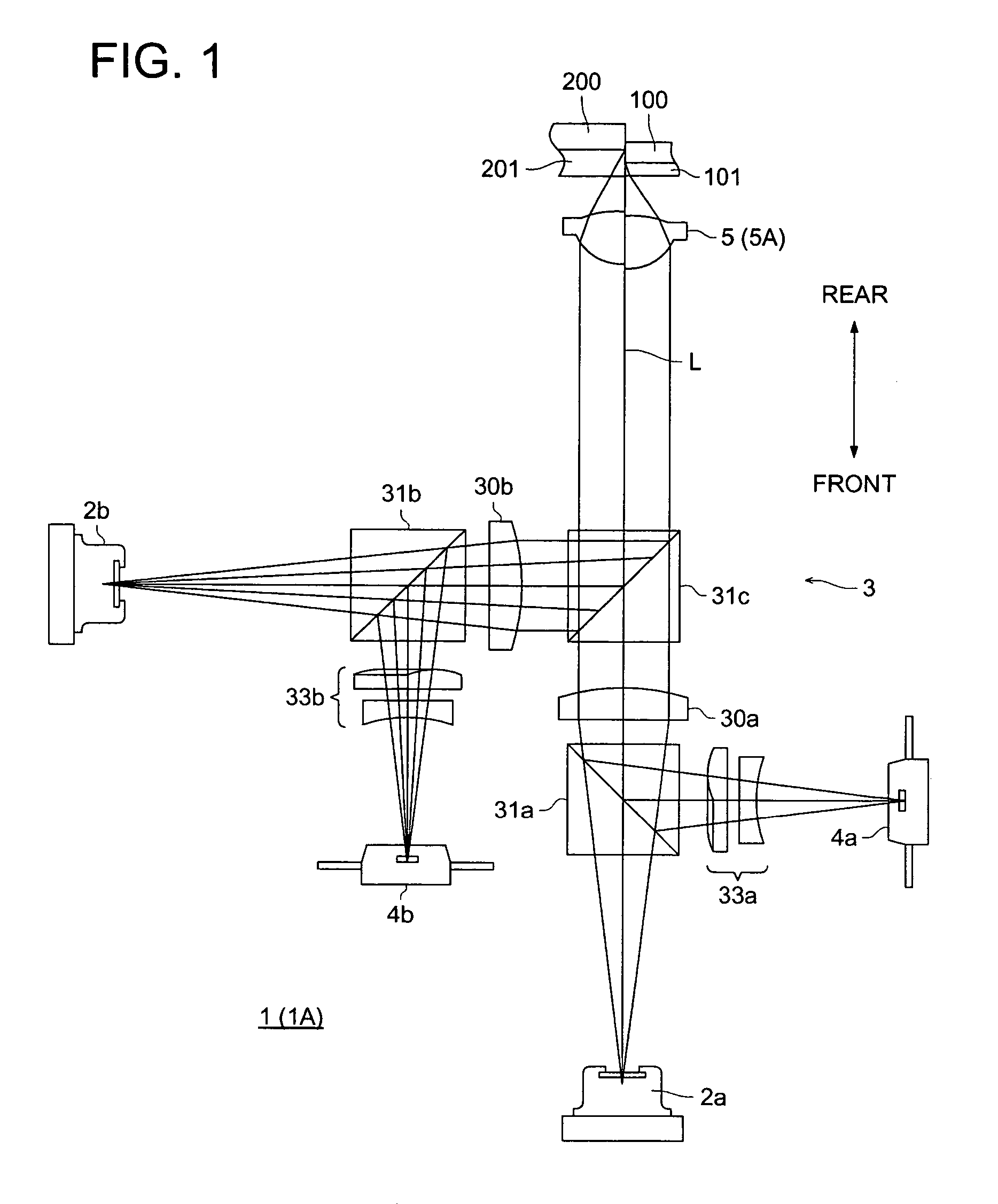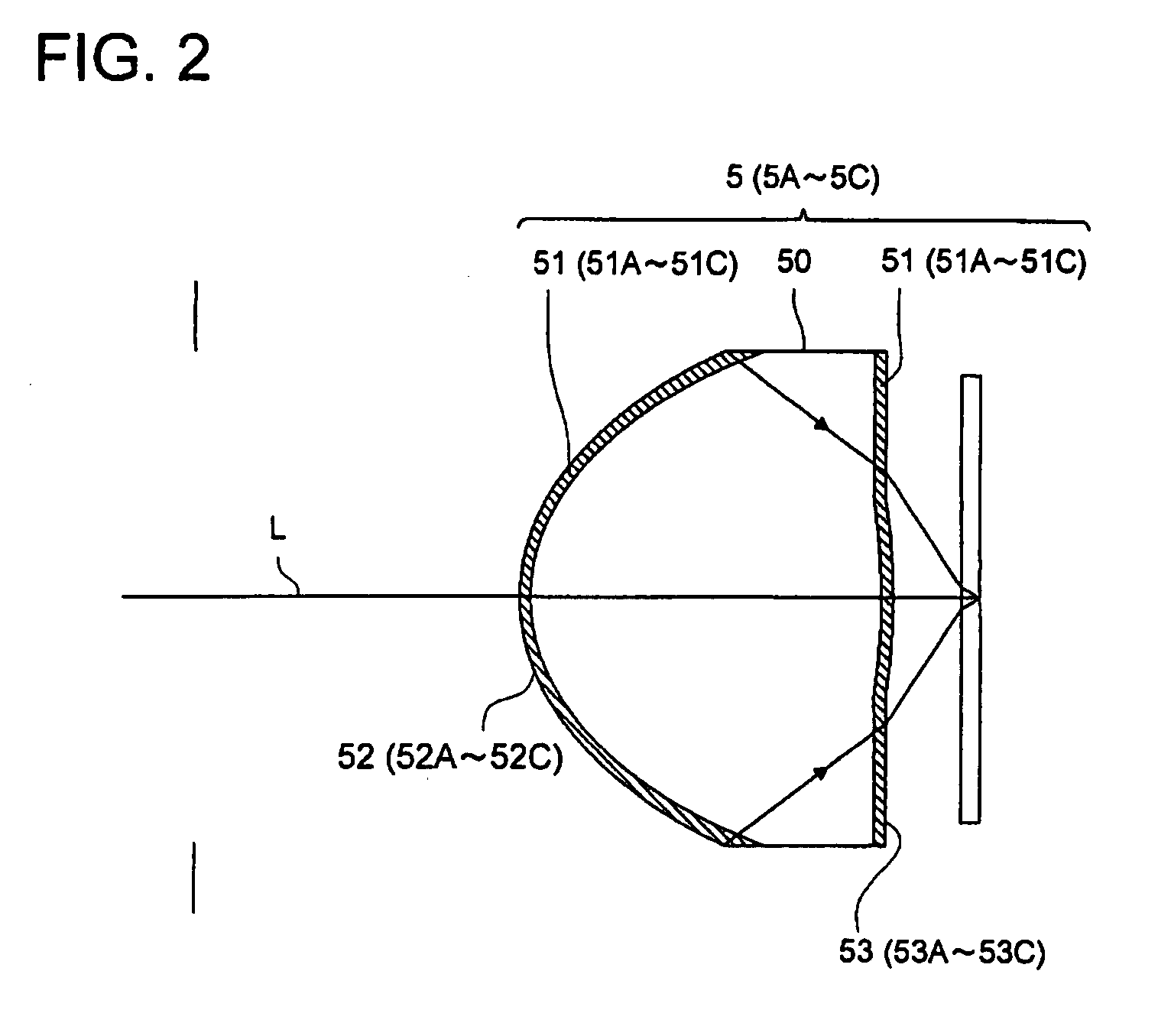Optical element having an anti-reflection film and optical pickup apparatus
an anti-reflection film and optical pickup technology, applied in the field of optical elements having anti-reflection films and optical pickup apparatuses, can solve the problems of worse information recording and/or reproducing accuracy, and the inability to conduct and achieve the effect of high information recording accuracy, excellent beam spot shape, and accurate recording and/or reproducing information
- Summary
- Abstract
- Description
- Claims
- Application Information
AI Technical Summary
Benefits of technology
Problems solved by technology
Method used
Image
Examples
first embodiment
[0076]First, an embodiment of the optical pickup device relating to the invention will be explained.
[0077]FIG. 1 is a diagram of a schematic structure of optical pickup device 1 in the First Embodiment.
[0078]As shown in the drawing, the optical pickup device 1 is provided with first laser light source 2a and second laser light source 2b both emit a laser beam.
[0079]The first laser light source 2a is one that emits a first laser beam having wavelength λ1 which satisfies 380 nm ≦λ1≦450 nm, and it is λ1=405 nm in the present embodiment. This wavelength λ1 is a working wavelength for AOD (information recording medium) 100. Incidentally, thickness t1 of protective base board 101 of AOD 100 satisfies 0.5 mm≦t1≦0.7 mm.
[0080]The second laser light source 2b is one that emits a second laser beam having wavelength λ2 which satisfies 640 nm ≦λ2≦680 nm, and it is λ2=650 nm in the present embodiment. This wavelength λ2 is a working wavelength for DVD (information recording medium) 200. Incidenta...
second embodiment
[0105]Next, a second embodiment of the optical pickup device relating to the invention will be explained. Incidentally, structural elements which are the same as those in the first embodiment are given the same symbols, and explanation for them will be omitted here.
[0106]Optical pickup device 1A in the present second embodiment is provided with objective lens 5A in place of the objective lens 5, which is different from the aforesaid optical pickup device 1.
[0107]The objective lens 5A is provided with lens main body 50 and antireflective film 51A, as shown in FIG. 2.
[0108]The antireflective film 51A is provided on at least one surface of lens main body 50, and in this particular case of the present embodiment, it is provided on each of both sides of the lens main body to be optical functional surfaces .52A and 53A.
[0109]Reflectance Rp1 for P polarized light and reflectance Rs1 for S polarized light both for the first laser beam respectively on optical functional surfaces 52A and 53A ...
third embodiment
[0114]Next, a third embodiment of the optical pickup device relating to the invention will be explained. Incidentally, structural elements which are the same as those in the first embodiment are given the same symbols, and explanation for them will be omitted here.
[0115]FIG. 3 is a schematic structural diagram of optical pickup device 1B in the Third Embodiment.
[0116]As shown in this diagram, the optical pickup device 1B is further provided with third laser light source 2c, collimator lens 30c, beam splitter 31d and diffraction plate 6, and is further provided with objective lens 5B in place of the objective lens 5, which is different from the optical pickup device 1 in the First Embodiment.
[0117]The third laser light source 2c is one that emits a third laser beam having wavelength λ3 which satisfies 750 nm ≦λ3≦850 nm, and it is λ3=780 nm in the present embodiment. This wavelength λ3 is a working wavelength for CD (third information recording medium) 300. Incidentally, thickness t3 ...
PUM
| Property | Measurement | Unit |
|---|---|---|
| wavelength λ2 | aaaaa | aaaaa |
| wavelength λ2 | aaaaa | aaaaa |
| wavelength | aaaaa | aaaaa |
Abstract
Description
Claims
Application Information
 Login to View More
Login to View More - R&D
- Intellectual Property
- Life Sciences
- Materials
- Tech Scout
- Unparalleled Data Quality
- Higher Quality Content
- 60% Fewer Hallucinations
Browse by: Latest US Patents, China's latest patents, Technical Efficacy Thesaurus, Application Domain, Technology Topic, Popular Technical Reports.
© 2025 PatSnap. All rights reserved.Legal|Privacy policy|Modern Slavery Act Transparency Statement|Sitemap|About US| Contact US: help@patsnap.com



